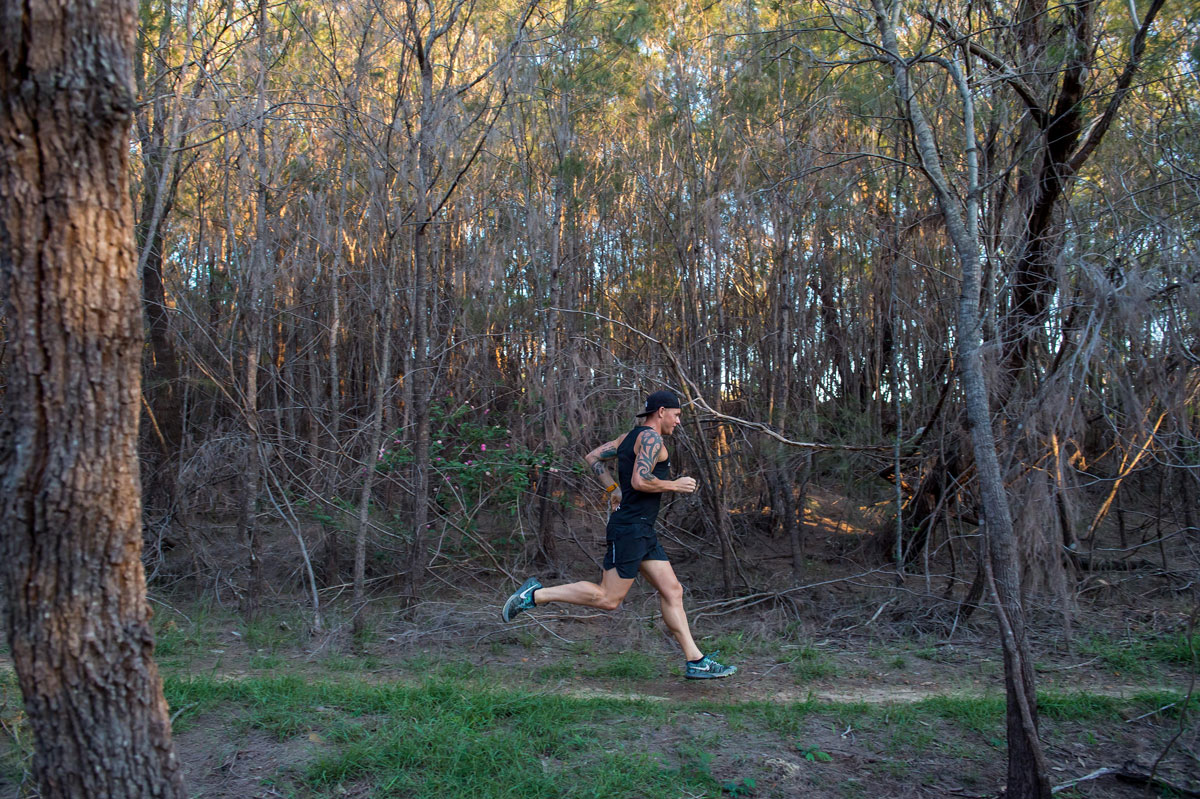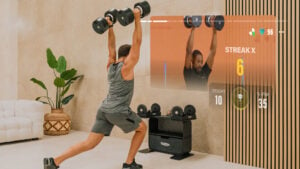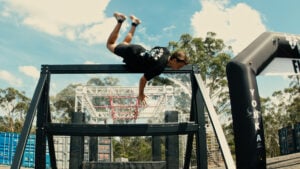With Covid-19 social distancing in full effect, we’ve seen a mighty influx of people hitting the pavement, and for obvious reasons. Running is great for both mental and physical health, but how do we structure our running? How much is too much and should we be doing any cross-training? We asked Matty Abel former Nike Running Coach, owner of DBA Runners and co-founder of Capra for a few running tips to help improve your running over the next few weeks.
Before we get into the different sessions to lose weight, build your strength and speed, or simply to keep your training interesting on picturesque trails, it’s important to remind ourselves of the key areas we need to focus on while running. This ensures our training sessions aren’t just aerobically enlightening but also efficient and as effective as can be.

Posture
It’s easy to forget running form and get into a slump when we start running. Most of the time our core isn’t strong enough and like a building with weak foundations, it collapses. Next time you’re running think of a string pulling you up from my head whilst you’re running. This will keep you tall and allow you to breath a little easier but prevent you from slumping over.
Arms
What do we do with them when we’re running? Firstly we will start with our hands. Pretend you are holding budgies (birds), you don’t want to squeeze them too much but you don’t want to let them go. Next, you want your hands to be brushing your hips, generally around where your shorts or tights are sitting and last keep your shoulders relaxed and down.
Breathing
Many runners find efficient breathing a challenge. When you start to run faster you start to go into a sympathetic state (fight or flight) but you can work on a few simple technics. A good way to start is breathing through your nose on your easy runs. Generally speaking, if you can’t do this, you need to slow your pace down as you’re running too fast. As you start to increase your pace you will naturally become a mouth breather, where you can start to experiment with a few methods, being 3 seconds in, 2 seconds out (3:2) and as you get faster you might dial down to 2:1. As you get better at this you can increase the timeframes.
Hips
An easy tip here is to think of the tops of your hips as the top of a fishbowl full of water. Most of the time your hips are going to be tilted forward, what we need to do is lightly squeeze the glutes which will level out your hips, prevent waddling duck arse and stop the imaginary ‘water’ from pouring out the front of the bowl, whilst getting your glutes working a bit more.
Cadence
Cadence is king but it can also bring on calf injuries, so take it slow if increasing your cadence. Ideally, we want to be running around 170-175 steps per minute when running easy, this slightly increases as you increase pace up to around 175-180 steps per minute. Most watches these days inform you of your cadence – usually count on one side – so the steps will be halved. RunTempo is also a great app you can play in the background when running.
Four Sessions To Execute
When it comes to improving our running, we want to ensure we have built a great aerobic base. This is achieved through easy running which should make up around 80% of your weekly running volume. The bigger your aerobic base, the more effective your speed work (anaerobic work) will be and the stronger your body will be. We also want to make sure we keep up our strength work – right now the gym isn’t an option but there is plenty you can do with your bodyweight or with a kettlebell.
As strength training reduces the chances of becoming injured and also our time to fatigue during a session, it’s an important running tip that shouldn’t be overlooked. The Nike Training app has a stack of body weight and weighted strength training for runners that you can access for free, as well as the Centr app which takes more of a holistic approach.
A repetitive, long run, can quickly become monotonous so we want to keep your running interesting. Here are four sessions you can do over the next four weeks to make up the 20% of anaerobic work required each week.
Intervals
Interval training is one of the most effective exercises for improving speed which is amplified by your aerobic base. Learning to run faster is a gradual process and I highly recommend building into this session. Ideally, our main set should equal between 20-30 minutes of work.
Example Workout: (An oval is suggested for this session)
- Warm-up: 10-15minutes easy running
- Main Set: 6-8 x 2-minutes hard / 1-minute easy
- Cool-down: 10-15minutes easy running.
Hill Reps
Athletes often don’t think about their running style and economy but running hills allows you to work on both. Running hills makes you work on moving your arms and legs more efficiently whilst building leg strength and increasing your lactate threshold.
Example Workout: (A steep hill is suggested for this session)
- Warm-up: 10-15minutes easy running
- Main Set: 8 x 1-minutes hard up-hill / 2-minute easy return
- Cool-down: 10-15minutes easy running
Tempo Running
The Tempo Run pushes you to a challenging aerobic and anaerobic pace but keeps you just below to your lactate threshold – you should be running at an intensity and pace that might be described as ‘fairly strenuous’ or ‘moderately hard’.
Example Workout:
- Warm-up: 10-15minutes easy running
- Main Set: 20-30 minutes at a moderately hard pace (broken conversational pace)
- Cool-down: 10-15minutes easy running
Progressive Run
Progressive training runs are workouts in which you gradually increase your pace during the session. They are great workouts to train for negative splits, improve your race performance, build your lactate turn point, raise your mental toughness, condition your central nervous system and improve your ability to run at a quality pace when fatigued.
Example Workout:
- 15 minutes easy running + 15 minutes moderate running + 10 minutes hard running
Finally, we can spice up our training by getting onto the trails and exploring our local National Parks. The RunHunters app has been created to give all runners the knowledge and confidence to explore unfamiliar areas and is currently free.
Download it for iPhone or Android at Capra.app
Listen to Matty and Olly Woolrych share running tips, discuss running shoes, the Vipers running club and the importance running for mental health on the Boss Hunting podcast.
Images @marceauphotography
















